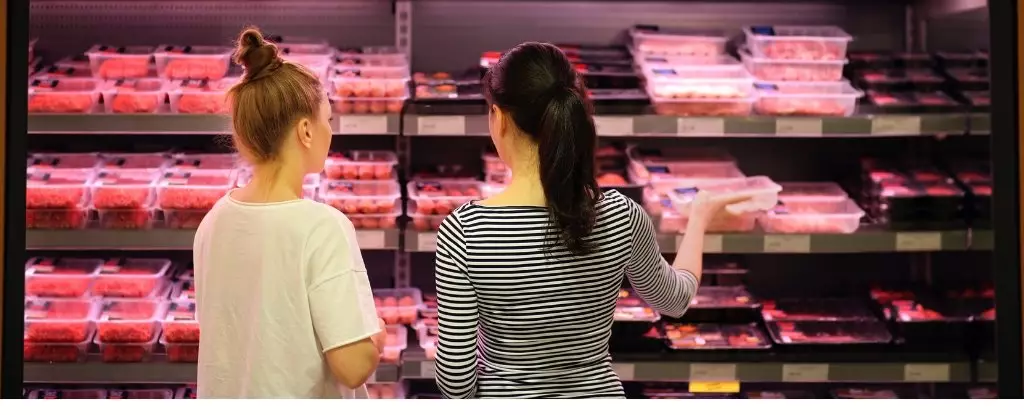As our society grapples with the consequences of overconsumption, the consumption of meat has emerged as one of the most contentious issues of our time. Although meat has long been a staple in human diets, modern awareness of its ecological and health-related consequences is pushing us to reevaluate how much we consume. A recent study led by environmental scientists at the Technical University of Denmark pinpoints a new benchmark: 255 grams (about 9 ounces) of poultry or pork weekly. The suggestion may seem simple, but it raises profound questions about how we view meat in our lives.
It’s no secret that the environmental implications of agricultural practices—particularly animal farming—are severe. The need to produce meat at an industrial scale leads to the depletion of land, the emission of greenhouse gases such as methane, and a considerable carbon footprint resulting from transportation and processing. Yet, as public awareness increases, many still find it challenging to internalize what “eating less meat” truly means. The researchers provide guideline figures, but does that simplistic number encapsulate the complex relationship humans have with meat?
The Unsustainable Truth About Red Meat
One of the striking findings of the research is its condemnation of red meat, particularly beef, which appears incompatible with a sustainable dietary lifestyle. This conclusion raises eyebrows, especially given that beef has historically held a special place in culinary traditions across cultures. However, this modern understanding reflects an urgent reality: our environmental constraints cannot support the same dietary habits of the past. The study highlights a society heavily reliant on a resource-intensive food system that seems to prioritize convenience over capabilities—capabilities that include sustainability.
While the reports highlight that alternatives exist, such as cheese, fish, and eggs, they inadvertently provoke a ripple effect of questions about the ethics of sustainable eating. Beyond individual dietary choices lies a moral imperative. How can we consider sustainability when the demand for meat perpetuates a system that exploits natural resources? A more profound solution appears imperative, one that facilitates a balance between human cravings and the Earth’s capacity to provide.
Pragmatism vs. Purism: The Diet Dilemma
The researchers’ model aims to create a diversified food intake that minimizes ecological impact while still addressing health needs. They emphasize the possible integration of moderate meat consumption along with other foods. This balance is commendable; however, it also reflects the growing debate between pragmatism and purism in the food movement. Is it sufficient to give simple figures for a diverse population with varying cultural norms, economic capabilities, and personal preferences?
Models that offer mere numerical recommendations miss the essence of dietary diversity; after all, every individual’s cultural background and personal circumstances shape their relationship with food. While the study acknowledges these complexities, the reliance on data from high-income countries throws into question whether its recommendations translate into a broader global narrative. Our planet’s diverse tapestry necessitates a more nuanced approach to dietary guidelines that resonate across socio-economic barriers.
Greenhouse Gases: The Hidden Cost of Convenience
It is critical to understand the shocking statistics tied to livestock farming—studies indicate that a dramatic reduction in animal agriculture could stabilize greenhouse gas emissions for several decades. This revelation forces us to confront uncomfortable truths about convenience and consumption. The yearning for meat isn’t rooted solely in taste; it often represents a long-standing cultural identity, making it incredibly difficult to advocate for significant dietary changes. How do we respect tradition while embracing sustainability? The battle against climate change is also a battle against deeply ingrained habits that are resistant to change.
To move forward, we must advocate for a shift not just in our diets but in our cultural narratives around food. Engaging communities to explore alternatives to meat-centric meals can spark innovative culinary practices that honor both tradition and environmental responsibility. Local farmers, ethical agriculture, and plant-forward diets can pave the way for a more sustainable culinary culture that does not vilify meat but instead seeks to diminish its impact.
Rethinking Access and Affordability
Lastly, no discussion about dietary recommendations can ignore the crucial factors of accessibility and affordability. The model presented by the researchers relies on assumptions about equitable food distribution that simply do not hold for underserved communities. Many individuals living in food deserts are unable to make choices that align with sustainability principles due to economic constraints. As sustainable practices are often perceived as a luxury, the gap between the privileged and the marginalized widens.
Addressing the meat consumption challenge, then, requires vigilance—offering solutions that are not only meaningful on a personal level but also social in scope. We cannot expect individuals to adhere to dietary guidelines when systemic barriers obstruct their access. It’s imperative to advocate for policies that make sustainable foods affordable and accessible for everyone, ensuring that environmental health doesn’t come at the exclusion of social justice. Only then can we aim for a healthier planet without sacrificing our customs or perpetuating inequality.


Leave a Reply